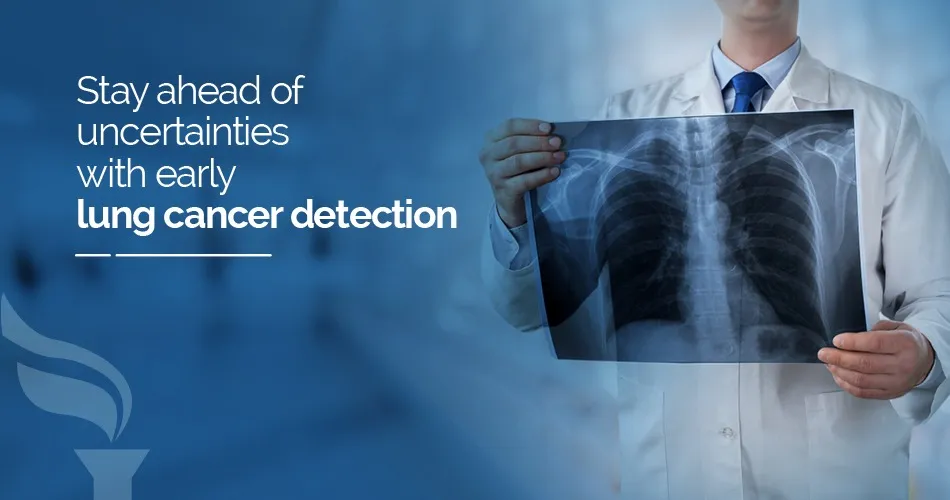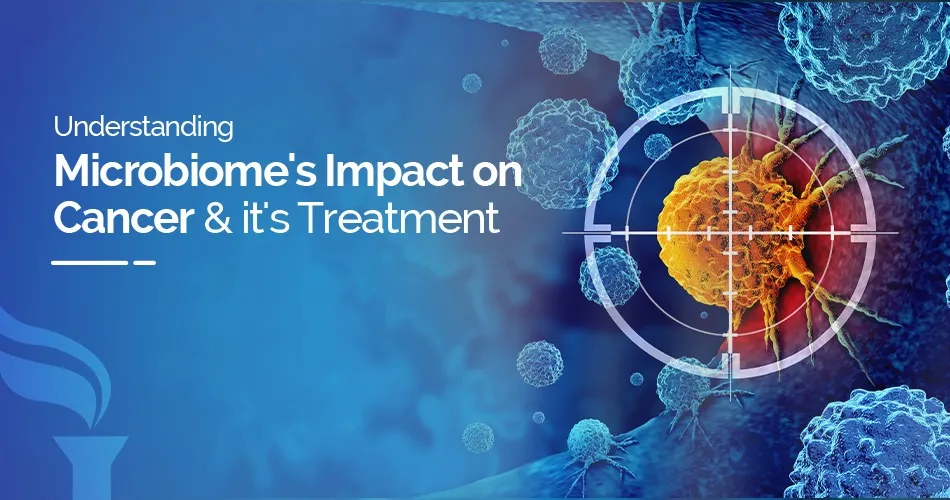Breath of Relief: Revolutionising Early Detection of Lung Cancer
Apr 13, 2024

Breakthroughs in the early detection of diseases hold the potential to revolutionise treatment. The initiation of lung cancer screening tests exemplifies this significant advancement. Once known as one of the deadliest forms of cancer due to last-stage diagnosis, Lung cancer now has prompt diagnosis with newer screening tools, promising early detection and better outcomes.
Lung cancer is a worldwide health concern, accounting for a large number of cancer-related fatalities each year. One of the key reasons for its high mortality rate is the absence of symptoms in the early stages, which leads to diagnoses after the disease has progressed to severe stages. Traditional diagnostic approaches, such as chest X-rays and sputum cytology, proved unfruitful in detecting lung cancer in its early stages. There exists a critical need for more effective screening tools.
Advancements in medical imaging technology and a better understanding of lung cancer biology have laid a significant foundation for developing ground-breaking screening assays. Low-dose computed tomography (LDCT), in particular, has turned out to be a game changer in the early diagnosis of lung cancer.
LDCT deploys special X-ray equipment to produce comprehensive images of the lungs while exposing patients to considerably lower levels of radiation than traditional CT scans. Because of the lower radiation dose, LDCT is an appealing choice for screening, especially in high-risk individuals like current and past smokers.
in high-risk individuals like current and past smokers.
Even major studies attest to the efficacy of LDCT in detecting lung cancer at an early stage, highlighting higher survival rates among screened individuals. The National Lung Screening Experiment (NLST), a large-scale randomised controlled experiment with over 53,000 participants, found concrete evidence in favouring LDCT for lung cancer screening. The NLST results demonstrated a 20% reduction in lung cancer mortality amongst high-risk patients who had gone through annual LDCT screening compared to those who received x-ray scans.
Researchers are carrying forward the success of LDCT and developing novel ways to improve the accuracy and accessibility of lung cancer screening. By integrating artificial intelligence (AI) and machine learning algorithms into imaging systems, radiologists gain a support system in interpreting images and detecting cancer indications. Deployment of these AI-powered strategies has displayed promising results in increasing the sensitivity and specificity of lung cancer diagnosis, thereby reducing false positives and unnecessary follow-ups.
Furthermore, breakthroughs in blood-based biomarkers show tremendous potential for non-invasive early detection of lung cancer. Liquid biopsy techniques, which examine circulating tumour DNA (ctDNA) and other macromolecules in the blood, provide a less intrusive alternative to standard tissue biopsies. Liquid biopsies can detect genetic mutations and other molecular changes associated with lung cancer in its early stages, even before symptoms appear.
Combining imaging technologies, biomarker analysis, and data-driven algorithms represents a new approach to lung cancer identification and management. These advancements, made possible by the collaboration of clinicians, researchers, and industry partners, have the potential to change the standard of care for those at risk of developing lung cancer.
Despite remarkable advances in screening and early detection, there exist hurdles that make ensuring equitable access to lifesaving tools a bit difficult. Addressing concerns of cost, infrastructure, and healthcare inequities is critical to ensuring that all people, regardless of socioeconomic class or geographic location, may benefit from developments in lung cancer screening.
In conclusion, the development of lung cancer screening assays represents a giant leap in the fight against this dangerous illness. From LDCT imaging to blood-based biomarkers, each advancement takes us closer to our objective of detecting lung cancer in its early and most treatable stages. By using the power of innovation and collaboration, we can shift the narrative of lung cancer from one of despair to one of hope, saving lives and inspiring people to live healthier, longer lives.
Related Blog Post
Blog Categories
- Child Health
- Mens Health
- Women's Health
- Mental Health
- Health Myths & Facts
- Fitness
- Nutrition/Recipes
- Remedies
- Weight Management
- Stress Management
- Health Supplements
- Addiction Management
- Disease Management
- Allergy
- Anemia
- Arthritis
- Asthma
- Autoimmune Diseases
- Blood Pressure
- Cancer
- Deficiencies
- Dengue/Malaria/Chikungunya
- Diabetes
- Eye Problems
- Heart Diseases
- Hepatitis
- HIV/AIDS/STD
- Hormonal Imbalance
- Infection/Flu/Viral
- Kidney
- Liver
- Menstrual Problems
- Pregnancy
- Skin & Hair Problems
- Stomach Ailments
- Thyroid
- Others
- Health Checkups
- Diagnostics/Pathology
- Lifestyle & Wellness
- Covid
- Medical Tests
- Cholesterol
- Health Tips
- Parent Care/Old Age
- Lungs
- Food Intolerance








